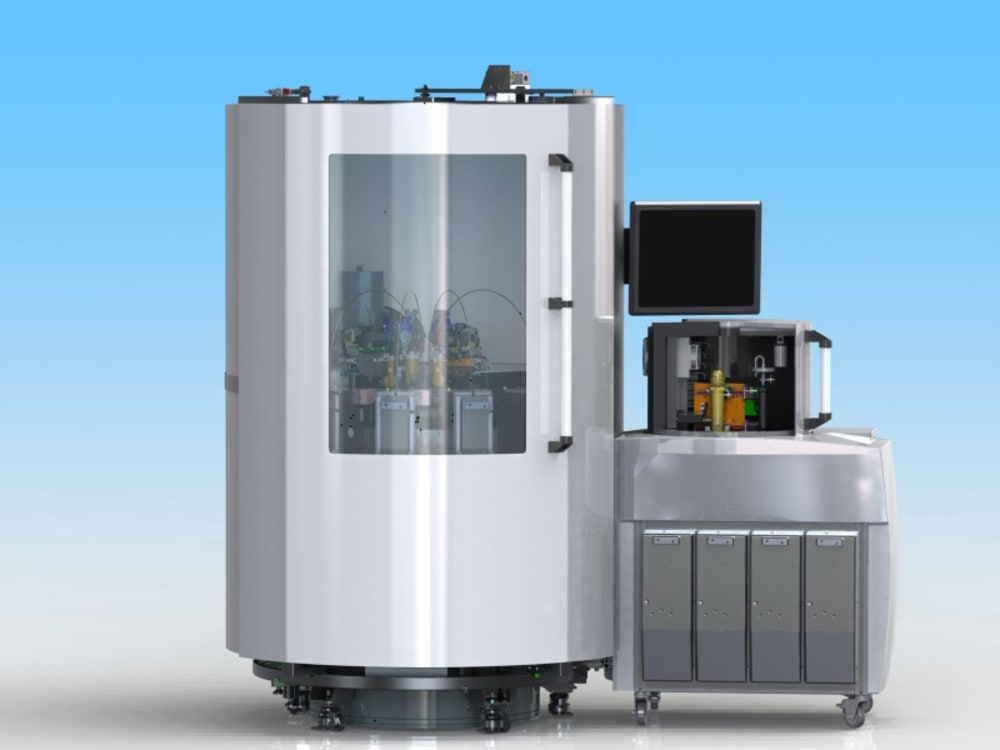
Almost all the major diseases are somehow linked to metabolic alterations. The introduction of Hyperpolarized Metabolic Imaging has opened completely new possibilities to study non-invasively the biochemical changes in disease processes by improving the sensitivity of Magnetic Resonance by more than 20,000-fold (PNAS 2003). GE SpinLab™ harnesses hyperpolarized Carbon 13C (C13) to view metabolic processes in real time. This approach will help researchers to study the real-time metabolism of disease, moving beyond morphology and functionality to reveal visual information about the flow, perfusion, metabolism, and organ and cell viability in living creatures.
The user simply loads the agent into our SpinLab, allows the automated process of hyperpolarization to take place without consideration of the intricate physics, and finally obtains the hyperpolarized agent ready for use. The improvement in sensitivity can be exploited in multiple ways and application including reduced detection limits, accelerated measurement speed and enhanced spatial resolution to investigate low levels of metabolites in cellular and disease models as well as biochemical assays.
To achieve this improvement in sensitivity SpinLab generates an ultra-low temperature (-272 °C or 1 Kelvin) environment in a high magnetic field (5 Tesla) with microwave irradiation (140 GHz) in a fully automated system with an ergonomic user interface. Traditionally, such low temperature is achieved by the evaporation and consumption of large quantities of liquid cryogens, which is costly and inconvenient to the user. Our product reaches this extremely low temperature without any consumption of cryogens. Metabolically relevant agents can are processed with the SpinLab in a custom designed disposable fluid path. The device mechanically and fluidically moves the agent through the processing steps. The fluid path is a highly engineered plastic component that contains the sample of interest and solvents. It tolerates extreme temperature (-272 °C to 150 °C), pressure (to 15 bar) and is chemically resistant. The fluid path ensures a robust process and integrity of the sample and provides the customer with a convenient and automated work flow for sample characterization or biological studies.
Pre-clinical researchers have produced over 500+ publications studying potential applications for this very powerful technology. In 2012, researchers from the University of California at San Francisco, using an early prototype, presented “A first-in-human phase I imaging study using hyperpolarized 1c-13 pyruvate in patients with localized prostate cancer” at the American Society for Clinical Oncology. The innovations in SpinLab have automated the concept and complex physics of hyperpolarization to enable researchers to explore in vitro and in vivo biochemistry in real-time.
-
Awards
-
 2012 Top 100 Entries
2012 Top 100 Entries
Like this entry?
-
About the Entrant
- Name:Jonathan Murray
- Type of entry:teamTeam members:Jonathan Murray
Andrew Leach
Jan Henrik Ardenkjaer-Larsen
Tim Skloss - Software used for this entry:solidworks
- Patent status:patented

